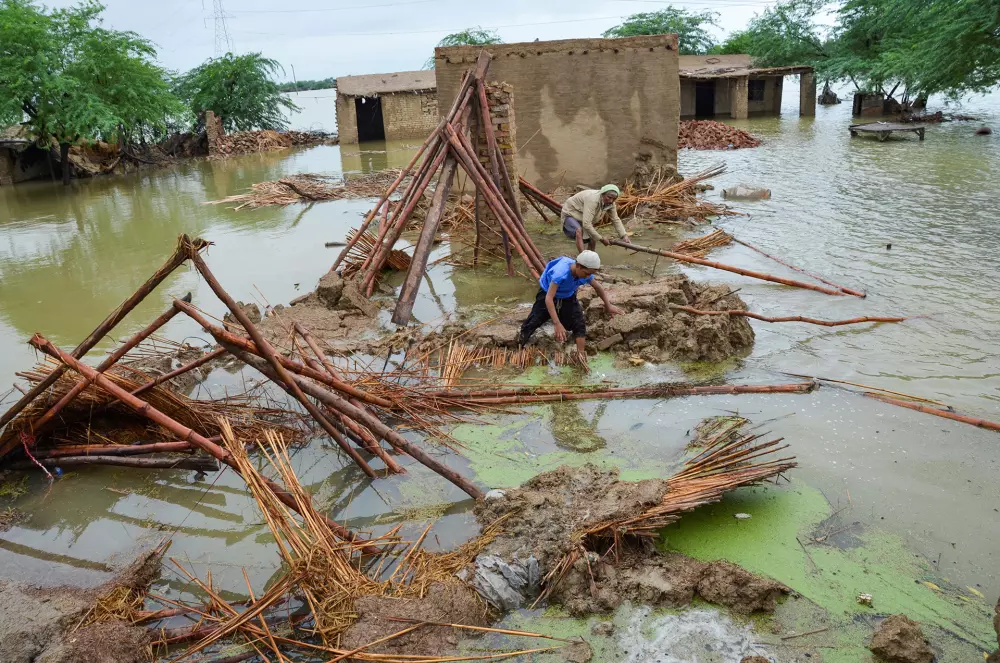Nearly one-third of people in the United States have been exposed to unregulated contaminants in their drinking water that could harm their health. A groundbreaking study conducted by scientists at Silent Spring Institute reveals a troubling racial disparity in this exposure. Hispanic and Black residents are disproportionately affected by unsafe levels of contaminants, which not only poses health risks but also reflects broader systemic inequities in environmental policy and infrastructure.
Published in Environmental Health Perspectives, the findings raise serious concerns about the state of drinking water quality in the U.S. and the alarming risks posed to minority communities. The study highlights a deeper connection between toxic exposure and historic practices like racism and environmental neglect, ultimately shedding light on a significant public health crisis in marginalized areas.
The Growing Challenge of Unregulated Contaminants
In the U.S., the Safe Drinking Water Act (SDWA) regulates around 100 contaminants in public water systems, setting enforceable standards that require water utilities to test and treat for harmful substances. However, there are thousands of other potentially harmful chemicals that are unregulated—meaning that while they may not meet current legal standards for maximum contamination, they still end up in water sources through runoff, industrial discharge, or widespread use in consumer products.
Among the unregulated substances studied by the Silent Spring team are 1,4-dioxane, PFAS (per- and polyfluoroalkyl substances), chlorodifluoromethane (also known as Freon 22), and 1,1-dichloroethane. These chemicals are linked to various health issues, including cancer, thyroid disease, reproductive problems, and birth defects.
1,4-dioxane, for example, is an industrial solvent that is classified by the Environmental Protection Agency (EPA) as a probable human carcinogen. PFAS, used in non-stick and stain-resistant products, are associated with serious long-term health risks, including cancer, developmental issues in children, and liver damage. Chlorodifluoromethane, widely known as Freon 22, has been a significant ozone-depleting agent, with residual amounts present in the environment due to its past use as a refrigerant. Another concerning substance, 1,1-dichloroethane, is commonly used in paints, plastics, and pesticides.
Despite knowing the harmful effects of these unregulated chemicals, they remain present in drinking water due to inadequate federal oversight and regulation. As a result, vulnerable populations are often left with the worst consequences.
Racial Disparities in Water Quality
The study from Silent Spring Institute found that communities with higher proportions of Hispanic and Black residents were more likely to have unregulated contaminants in their water. More concerning is that these communities also tend to be located near industrial or pollution-heavy areas such as wastewater treatment plants, airports, military training sites, and toxic waste facilities. These proximity factors increase the likelihood that pollution from these sources contaminates local water systems.
The research revealed that 27% of the public water systems serving 97 million people had detectable levels of at least one of the studied harmful chemicals. While exposure rates were alarming across all racial groups, the impact on minority communities was far more pronounced. The percentage of Hispanic and Black residents in these affected communities was found to be a strong predictor of poorer water quality.
Lead author of the study, Aaron Maruzzo, a scientist at Silent Spring, emphasized that these disparities cannot be solely explained by socioeconomic factors such as income. Rather, the findings suggest the role of historical and structural issues such as racism, segregation, and the legacy of redlining—practices that have led to the disproportionate placement of industrial facilities in predominantly Black and Hispanic communities. These neighborhoods have long been subjected to environmental burdens, from poor air quality to contaminated drinking water.
“The evidence consistently shows that Hispanic and Black populations are exposed to higher levels of contaminants, and the causes are more deeply rooted in systematic issues than purely economic ones,” says Maruzzo.
The Historical Context: Redlining and Environmental Racism
The issue of water contamination is linked to broader environmental justice concerns, particularly the historical practice of redlining. This practice, which involved marking areas predominantly inhabited by racial minorities as undesirable for investment, is one key factor that has contributed to the unequal distribution of pollution. In the mid-20th century, many Black and Hispanic communities were deliberately situated near hazardous industrial zones, including factories, waste sites, and chemical plants, because they were considered “undesirable” neighborhoods.
While the practice of redlining officially ended with the Fair Housing Act of 1968, the legacy of such discriminatory practices continues to impact the living conditions and health of those living in formerly redlined neighborhoods. These areas not only face challenges like elevated pollution but often lack the resources to fight back or secure proper environmental protections.
The Silent Spring Institute study underscores the direct link between environmental hazards like unregulated contaminants and longstanding issues of segregation and racism, calling for urgent reforms to address this legacy.
Nitrate Levels and Risk to Hispanic Communities
The study builds upon previous Silent Spring research, which highlighted the disproportionate exposure of Hispanic communities to high levels of nitrate in their drinking water. Nitrates, typically introduced into water through agricultural runoff, are hazardous because they can cause “blue baby syndrome” in infants, a potentially fatal condition where an infant’s blood fails to carry enough oxygen.
While nitrate contamination levels above the federal standard are known to be dangerous, recent studies suggest that even low levels of nitrate exposure could significantly increase the risk of colorectal and bladder cancer in adults, prompting new concerns about the sufficiency of existing regulations.
Emerging Risks: PFAS and Broader Implications
In their latest study, the Silent Spring scientists noted that newer testing has revealed that PFAS chemicals are more widespread in drinking water than previously realized. This class of chemicals, often referred to as “forever chemicals” due to their persistence in the environment, has been linked to a host of health problems, from cancer and kidney disease to liver damage and developmental effects in children. These chemicals are used in a variety of consumer products such as food packaging, carpets, water-resistant clothing, and non-stick cookware.
In April 2024, the EPA set drinking water standards for six PFAS chemicals, the first time the U.S. government has taken action to regulate the level of these chemicals. While this is a step forward, the Silent Spring findings suggest that many more unregulated chemicals remain in our water, continuing to threaten public health—particularly the health of minority communities.
Schaider, a senior scientist at Silent Spring Institute, emphasizes the need for stronger federal action. “We need to do a better job at protecting our source waters and reducing the discharge of pollutants into bodies of water that feed our drinking water supplies,” says Schaider. “This includes tighter regulations on contaminants like PFAS, as well as increased investment in monitoring and enforcement.”
Call to Action for Federal Regulations
The results from Silent Spring’s research point to an urgent need for sweeping reform in how the U.S. manages water quality and regulates contaminants. The existing system of monitoring and regulation is inadequate in the face of thousands of unregulated chemicals, which continue to infiltrate the nation’s drinking water systems. Given the particular impact these pollutants have on minority communities, it is essential that more resources be allocated to address these disparities.
Federal action must go beyond reactive measures like setting standards for certain pollutants and aim to prevent contamination before it starts. This includes greater oversight of industrial waste, pollution prevention programs, better protection for drinking water sources, and stronger protections for communities that are most vulnerable to environmental hazards.
Additionally, communities of color should be empowered to have a voice in decisions that impact their water safety and public health. This could involve stronger engagement between local communities, advocacy groups, and government agencies like the EPA. More robust monitoring, data collection, and public transparency can also help ensure that communities have access to safer water sources, even as the problem of water contamination remains pervasive.
Reference: Socioeconomic disparities in exposures to PFAS and other unregulated industrial drinking water contaminants in U.S. public water systems, Environmental Health Perspectives (2025). DOI: 10.1289/EHP14721






